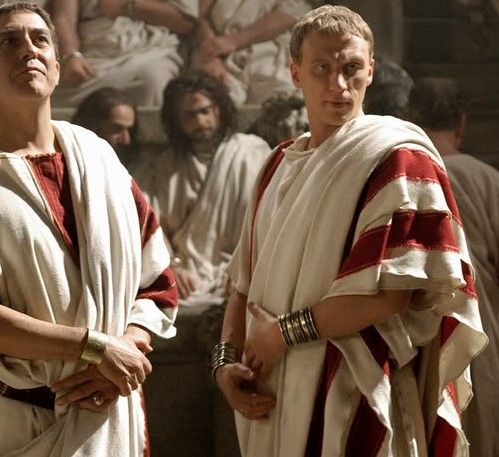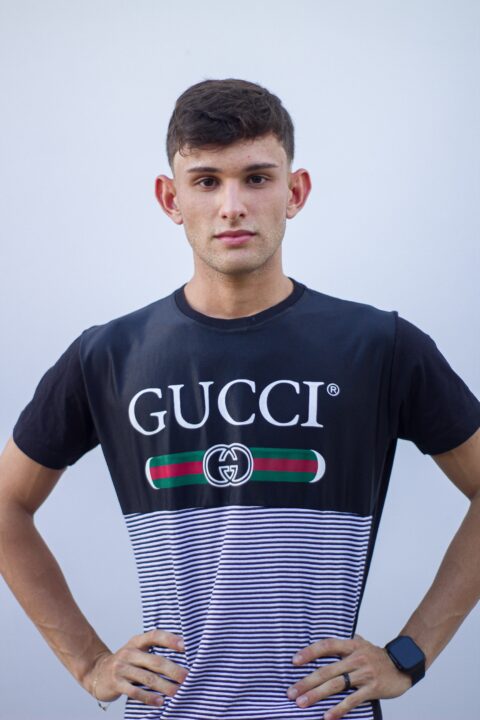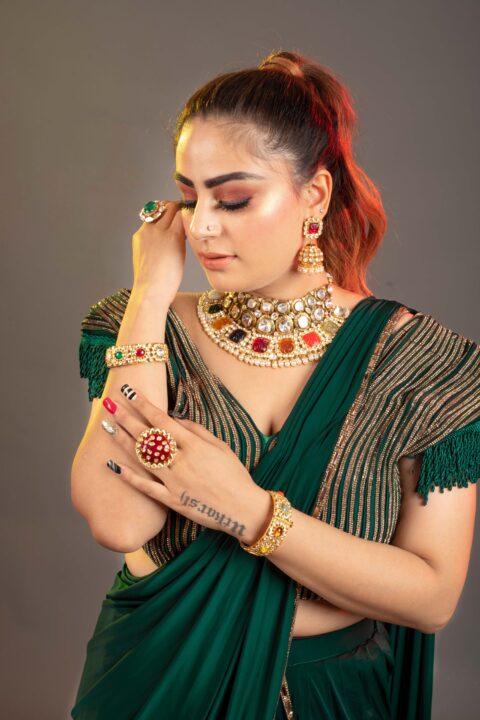Traditional clothing in Italy dates back to the Middle Ages and Renaissance periods, during which it grew to be popular, from sales of common velvet, wool, and silk to extravagant men’s and women’s fashion, which eventually got colonized by the industrialization of Italy. Many modern Italian fashion brands were founded in the early 20th century, and in the 1950s and 1960s, Italian fashion regained its popularity across the globe.
Traditional clothing in Italy is in different categories of male and female outfits, ranging from “toga”, “peasant”, “breeches”, “shirt,”, “culottes,”, “scarves,”, “tunic,”, “shawl,”, “sash,”, “vest,” and “culottes.” Knee-length, wide-legged pants offer comfort and style for everyone.
Traditional clothing in Italy is highly tailored with the use of high-quality materials such as fine wool and silk, elegant and timeless designs, and a preference for a simple and neutral color palette. Their unique attention to detail and strong sense of focus on versatile pieces that can be mixed and matched make their culture standard. In this article, we’ll be delving into certain traditional clothing in Italy.
10 Traditional Clothing In Italy
Traditional clothing in Italy is greatly impacted by the country’s abundant history, art, and culture, which always draws enthusiasm from these sources. Italy perfectly combines classic and modern materials, which ensures that clothes fit well and accentuate the natural lines of the body, making it a global fashion powerhouse known for its elegance and delicateness.
Traditional Italian costumes reflect regional diversity and historical influences. Men’s clothing luxury lies in the “Ferraiolo,” a floor-length gown with a wide, dramatic collar, often decorated with detailed embroidery. This outfit comes with the “Zimarra”, a long coat.
Women, on the other hand, display luxury in the “Roba da Marito,” an elegant gown with decorations of lush fabrics, intricate lace, and a fitted waist. Most times, these gowns came with head coverings called “Scuffia,” adding even more style. Here are the 10 traditional clothes in Italy:
1. Toga

A toga is a classic Italian garment. It is a long, soft fabric, usually white, that hugs the body elegantly and gracefully. The toga has historical significance as it was a traditional garment worn by the ancient Romans.
It conveys the wearer’s social status and class, with different designs and colors representing various classes in society. Although no longer commonly worn today, the toga continues to signify Italians’ dependable connection to their wonderful past.
2. Tracht (Alpine Clothing)
In the northern regions of Italy, especially nestled in breathtaking Alpine scenery, you will encounter the charming traditional costume known as “Tracht”. This clothing symbolizes the alpine spirit, with men wearing “lederhosen,” which are short leather pants that often come with a strap.
These heavy yet stylish pants are ideal for rugged mountain terrain. On the other hand, women elegantly wore “dirndls”, dresses decorated with intricate embroidery, complemented by aprons. These garments, filled with ancient importance, are not only useful but are also proudly displayed during festivals, signifying an intense connection to the region’s cultural roots.
3. Venice carnival costumes
Famous for its romantic canals and artistic heritage, Venice is also known for its extravagant “Venice Festival”. This impressive event engages Venetians and visitors alike in the captivating world of Venetian Carnival costumes.
These costumes transport the wearer to a bygone era and often recall the dignity of the 18th century. Elaborate masks called “masks” hide one’s true identity and create a mysterious atmosphere. The costumes are detailed art, captioning valuable fabrics, lace, and exquisite details.
Every year, Carnival is a grand spectacle, with these extravagant costumes turning Venice into a living work of art.
4. Abruzzo shepherd costume
Now let’s explore the rustic heart of Abruzzo, where traditional costumes have a utilitarian and pastoral charm. Abruzzo shepherds have their own “Pastore” outfit, designed for their demanding work on rough terrain.
This includes a wide-brimmed hat to block the sun, a long cloak called a “zimarra,” and leather sandals—all the perfect combination of form and function.
5. Traditional Friulian costume
This is a rich and culturally vibrant garment that has intense importance in the Friuli-Venezia Giulia region of northeastern Italy. This unique costume reveals the historical and cultural heritage of the region, and its design varies according to Friuli’s different communities.
For women, the traditional outfit often includes a white blouse with intricate lace, paired with a vest or colorfully embroidered bodice. Skirts are usually long and full, decorated with decorative patterns or floral motifs. A special headpiece called a “friulana” or “scufia” adds a unique touch with intricate embroidery and sometimes even small mirrors.
Men, on the other hand, wore white shirts with wide sleeves over a waistcoat often decorated with embroidery. Their pants are usually dark and may come with a scarf or belt. A felt hat or beret will complete the look.
These traditional outfits are worn on special occasions and festivals, honoring Friuli’s wealthy cultural heritage.
The craftsmanship and unique designs of this clothing talk about the history and responsibility of preserving the traditions of the region. Traditional clothing in Italy continues to be a symbol of pride and identity, connecting generations to their roots.
6. The Calabrian “Carrettu”
This attire is rooted in Calabria’s wealthy cultural heritage and is known for its ornate and enticing design. The clothing is a stunning and colorful traditional attire that originates from the southern region of Calabria, Italy.
The “Carrettu” costume consists of several components, each carefully crafted and adorned with meticulous detail. The centerpiece is the headdress, typically a large and well-decorated headpiece, often featuring animated flowers, ribbons, and jewels. This headdress is an emblem of femininity and dignity.
The dress itself is equally impressive, characterized by its full, flowing skirt and fitted bodice. The skirt is often adorned with embroidery, lace, and colorful patterns. The colors used in the “Carrettu” costume are bold and vibrant, reflecting the lively spirit of Calabrian culture.
Accessories play a significant role in completing the ensemble. Women wearing the “Carrettu” costume often wear necklaces, earrings, and bracelets, all designed to complement the overall look. The clothing may also include a shawl or scarf worn over the shoulders, giving it additional beauty.
The “Carrettu” costume is not just a piece of clothing but a symbol of Calabria’s lasting traditions and cultural pride.
7. Gondolier’s Attire
The attire of a gondolier in Venice, Italy, is not only a uniform but also a symbol of the city’s unique charm and tradition. These boatmen are a vital part of Venice’s cultural identity, and their distinctive clothing reveals both practicality and style.
At the heart of a gondolier’s attire is the striped shirt, known as a “mariner’s shirt.” This shirt is typically blue and white and features horizontal stripes. The design of the shirt is not just for aesthetics; it serves a functional purpose.
The stripes make it easier for gondoliers to spot one another from a distance while driving the labyrinthine canals of Venice. Accompanying the striped shirt, gondoliers often wear dark trousers and a sash around their waist. A straw hat, known as a “boater” or “canottier,” completes the ensemble.
The boater is made of woven straw and features a black ribbon, adding a touch of dignity to the general look. The gondolier’s attire stimulates images of leisurely rides through narrow canals and serenades on the water. The gondolier’s uniform remains an important and valuable facet of Venice’s unique charm, attracting tourists from around the world.
8. Sicilian Traditional Clothing
Sicily, the largest Mediterranean island, harbors a rich tapestry of culture, and its traditional clothing embodies this diversity. Sicilian women gracefully wear dresses characterized by their vivid colors and ornate detailing.
These garments often feature elaborate headscarves, adding a touch of elegance to their attire. Men’s attire is equally distinctive, often consisting of “berretti” hats and shirts with bold patterns. Sicilian traditional clothing serves as a visual narrative of the island’s history, influenced by a range of cultures, including Arab, Norman, and Spanish. These traditional outfits remain an integral part of Sicilian culture, donned proudly during festivals and special occasions.
9. The Classic Italian Suit

The hallmarks of the classic Italian suit are its slim silhouette, high armholes, and minimal padding, which allow for a close and comfortable fit. These features are designed to accentuate the wearer’s physique and provide freedom of movement.
Renowned for its impeccable tailoring and craftsmanship, it has left an indelible mark on menswear. This sartorial masterpiece traces its origins back to Italy’s rich history and the evolution of men’s attire. Italian tailoring gained prominence in the early 19th century when tailors from Naples and Milan introduced innovations in suit construction.
Italian mills are celebrated for producing some of the world’s finest textiles, including luxurious wool and silk blends.
In the realm of Italian fashion, designers like Giorgio Armani, Brioni, and Ermenegildo Zegna have played pivotal roles in popularizing the classic Italian suit on the global stage.
The choice of fabrics in Italian suits is equally significant. These materials contribute to the suit’s drape and texture, enhancing its overall appeal. Their designs exemplify the perfect fusion of tradition and innovation, making Italian suits highly sought-after by discerning gentlemen worldwide.
Whether worn for business, formal occasions, or everyday elegance, the classic Italian suit continues to be a symbol of style and refinement, a testament to Italy’s enduring influence on the world of fashion.
10. Alpine (mountain) attire
This is the main garment of the Dolomites, a region in northern Italy affected by rugged terrain and harsh weather conditions. This traditional outfit is designed to bring warmth and comfort to the people living in this mountainous region. They are worn to withstand the harsh conditions of the Dolomites, making them a practical choice for those living or working in the region.
At the heart of Dolomite Alpine clothing is the “Loden” jacket. This jacket is made from thick, water-resistant wool fabric, providing exceptional protection against alpine weather. Wool’s natural insulating properties help keep the wearer warm in cold weather, and its waterproof qualities ensure they stay dry even in rain or snow.
Underneath their coats, people often wear layers of woolen clothing, including sweaters and thick pants. These layers trap heat close to the body, providing essential warmth in the cold climate of the Dolomites. Shoes are also very important in these mountains. Traditional hiking boots, often made of sturdy leather, are designed to provide traction on uneven and slippery terrain.
This alpine outfit isn’t just practical; it reflects the cultural heritage of the Dolomites. While modern materials and designs have been incorporated into everyday wear, traditional clothing from the Dolomites continues to symbolize the resilience and adaptability of people who have evolved over generations in this beautiful but harsh alpine environment.
Modern Fashion trends
1. Dolce & Gabbana
Dolce & Gabbana’s history is a narrative of endless determination to stand out in a competitive market. In 1985, Dolce & Gabbana was established in Milan, Italy, by Domenico Dolce and Stefano Gabbana. Dolce was raised in Sicily, where his family had a small clothing business. Dolce developed the talent at an early age, creating his first outfit at the age of six.
2. Versace
It was in 1946 that Gianni Versace was born in Reggio Calabria, Italy. Early in the 1970s, he started his fashion career by serving as a designer for Callaghan, Genny, and Complicate. He established his own clothing line, Gianni Versace, in 1978. The business immediately became well-known because of its edgy, beautiful designs.
3. Gucci

Guccio, in Florence, Italy, established the renowned fashion house. According to Rebag, before starting his own company, Gucci worked as a porter at the Savoy Hotel in London. He began working with leather after coming home to work for the Franzi suitcase company, and wealthy hotel guests inspired him to launch his own business. Gucci later branched out into the market for equestrian equipment as news of the brand reached the ears—and wallets—of British nobility. Gucci began to sell more than simply leather goods and travel gear.
4. Valentino
In 1960, Valentino Garavani established the Italian luxury fashion company Valentino Valentino S.p.A. as a subsidiary of the Valentino Fashion Group. Since October 2008, Pierpaolo Piccioli has been the creative director with Maria Grazia Chiuri, who held the position from 2008 until 2016. The company’s headquarters are in Milan, and its creative center is in Rome. The license for Valentino Beauty is held by L’Oreal.
Final Words
Traditional clothing in Italy symbolizes history and culture. From the elegant simplicity of the toga to the intricate patterns of regional costumes, this clothing reflects the diversity of Italy’s heritage and the country’s enduring commitment to style and tradition.
In this article, it was made clear that traditional clothing in Italy serves as a window into the past, which also influences present-day fashion, connecting tradition and modern times.




